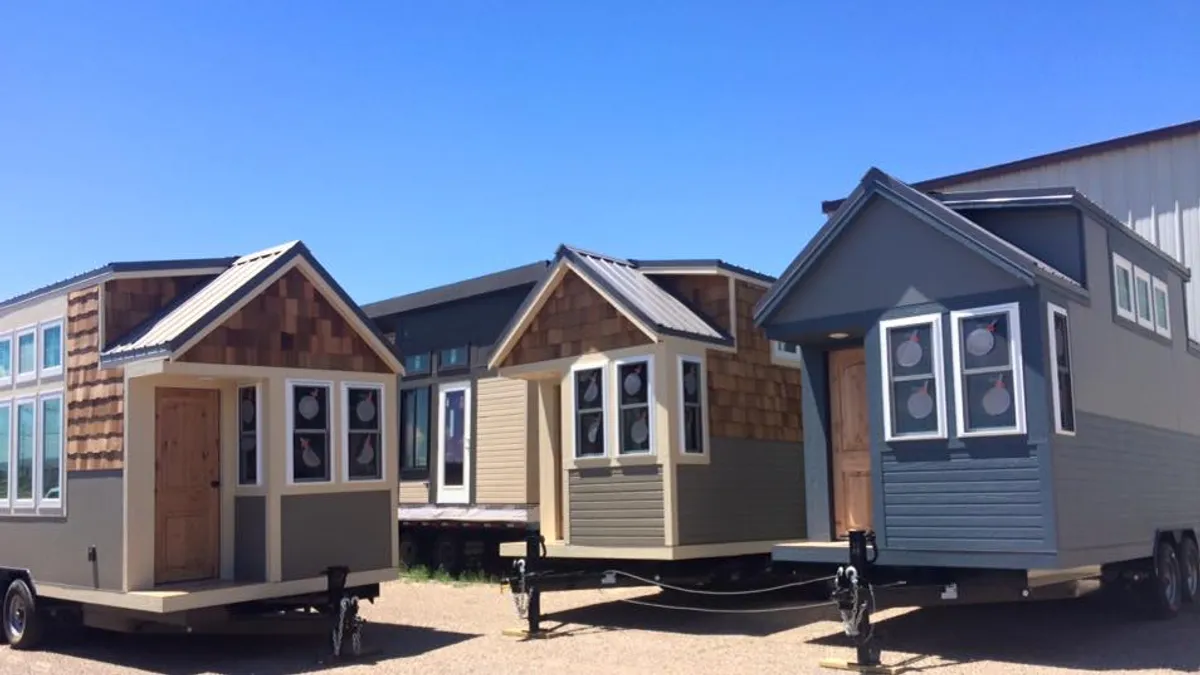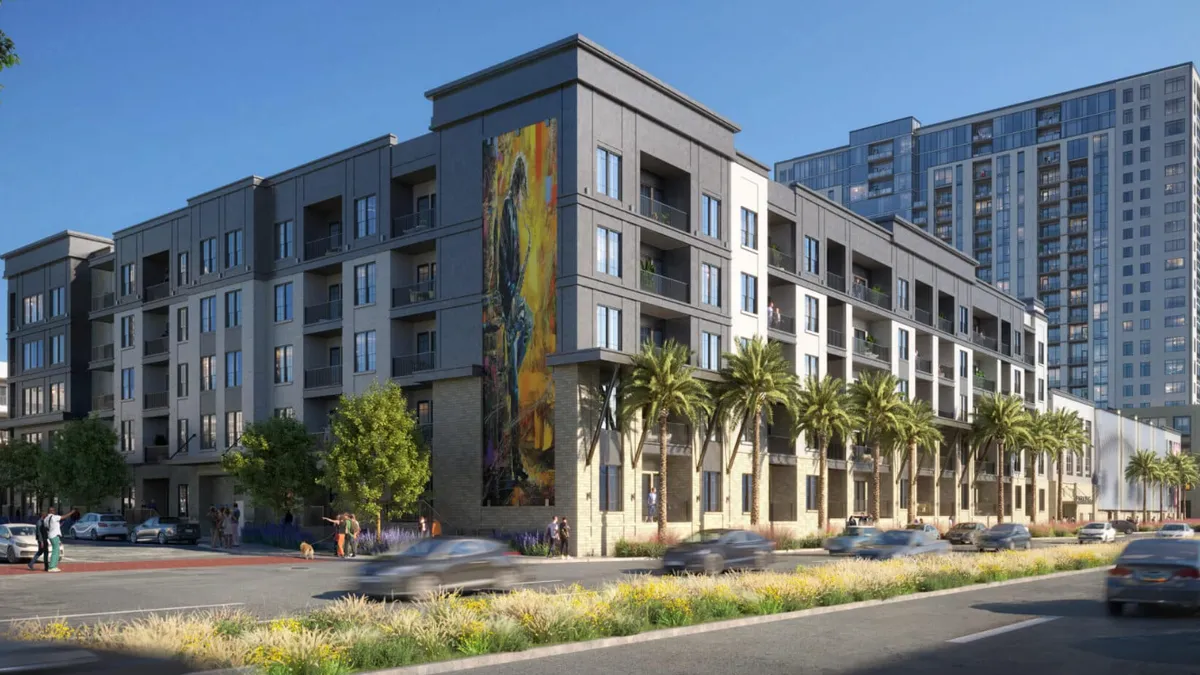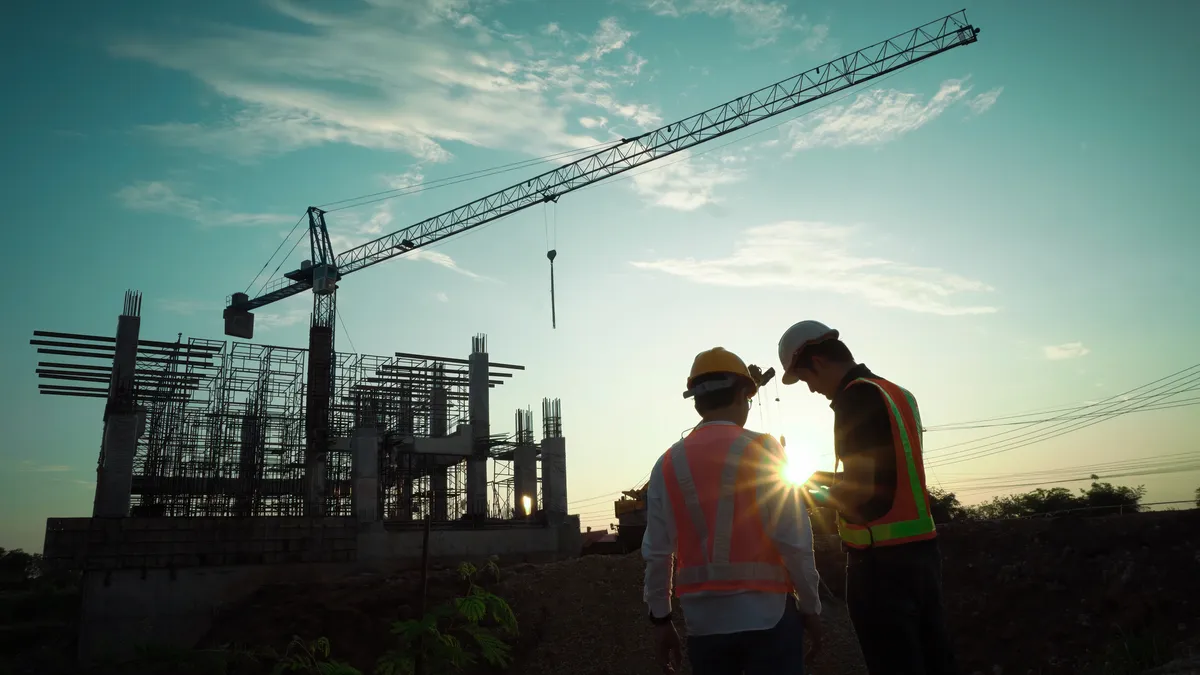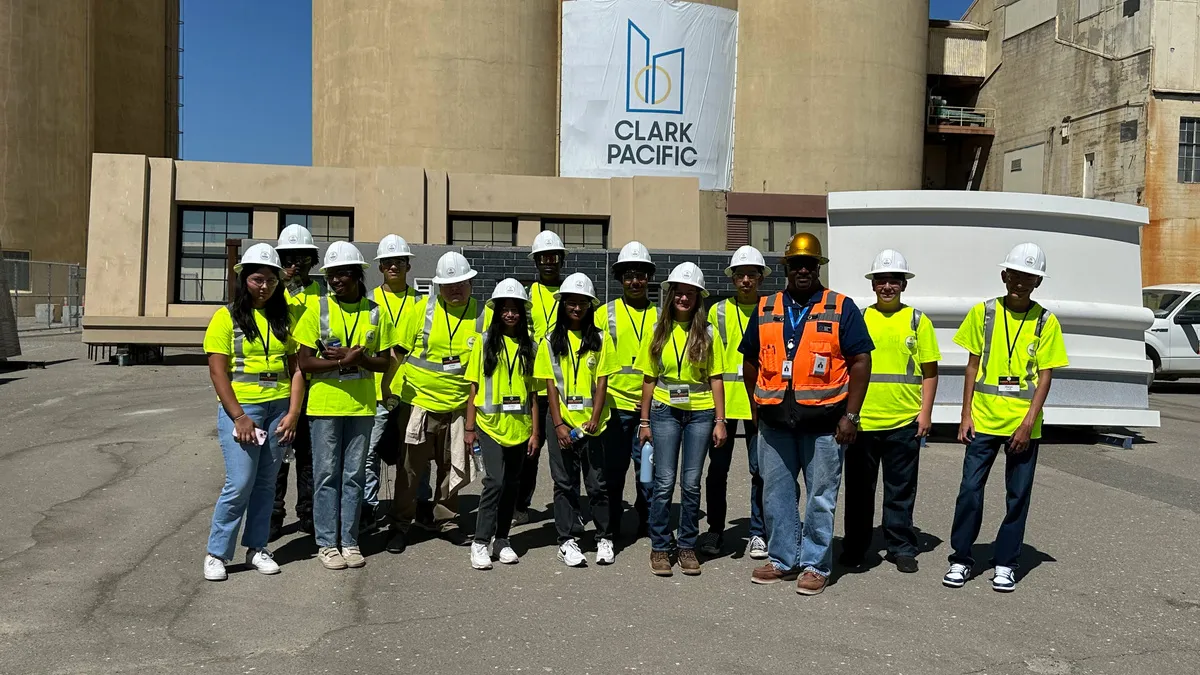Editor's note: The following is the sixth installment of Construction Dive's "Tiny house trends" series, which features interviews with tiny home builders. Read previous installments here, here, here, here and here.
The tiny house movement has often been criticized as a fad that is only popular among young people who enjoy the novelty of building their own home and living in a small space. Residential industry insiders have also questioned the place of tiny houses in the broader housing market.
However, Rod Stambaugh, founder of Sprout Tiny Homes in La Junta, CO, hasn't allowed those skeptics to keep him from creating a business that banks on the lasting popularity of tiny homes. Not only did Stambaugh become a custom tiny house builder, but Sprout is one of the first developers of tiny home communities in the U.S. The company is preparing to break ground on two tiny house communities in Colorado this summer, with the 200-home Salida, CO, development marking the largest tiny house community in the country.
Starting fresh in the residential market
So why did a 23-year veteran of the mobile electronic payment industry leave the tech world and pivot to the tiny house market?
"I took a big left-hand turn two and a half years ago," Stambaugh, whose only construction experience was building homes in college, told Construction Dive. "I'd been studying the tiny home industry and thought it would be pretty big. I decided to see if we could dominate it."
In 2013, Stambaugh set up a manufacturing facility in La Junta and formed a team to build Sprout's first tiny home. He said construction of the first house was a "learning process" and took longer to complete due to Sprout using the traditional stick-built process, which the company has since improved upon. After finishing the first small house, Stambaugh took it to a Denver home show and drew major attention from showgoers.
Soon after that first surge in interest, Sprout started looking for ways to improve its custom homes and the building process. "Along the way, we really decided to focus on building high-quality, high-end, chemical-free homes," Stambaugh said.
Sprout switched to using structural insulated panels (SIPs) — a composite building material — to make the building process more efficient, as well as improve the final product. "It just makes the home stronger, greener, straighter," Stambaugh said. "We also focused on a really paramount feature being chemical-free interiors."
The strength of the SIPS panels allows the homes to be driven thousands of miles without experiencing cracks or structural issues. "We tow these things 1,500 miles, and there are absolutely no issues at all," Stambaugh said. "There are no cracks in the drywall. If that was stick-built, it just wouldn't handle it."
All of the interior features for Sprout's tiny homes are custom-made, Stambaugh noted. "There's no real great furniture, appliances, or anything that's been built in any kind of sustainable way for tiny homes," he said.
Sprout now offers three tiny house models — the Aspen, Birch and larger Waterhaus. The company has grown to employ a staff of nine people, but Stambaugh predicts that number will grow to approximately 35 in the coming months as the Colorado communities kick off. He said the company has built 22 tiny homes since Sprout's debut, with some on wheels and others on foundation. The average price of tiny houses sold so far is approximately $60,000, and build time from start to finish takes only 30 days.
Expanding into the development business
Despite Sprout's success in the individual custom tiny home market, Stambaugh said his clients kept lamenting concerns about where they would ultimately put their small houses. "Zoning wasn't very friendly in various towns and counties and cities, so we took a step back and started working with different cities," he said.
Walsenburg, CO, a town of 2,927 residents and the future home of one of Sprout's tiny house communities, was the second city in the U.S. to change its zoning laws, which now permit buildings smaller than the previous limit of 600 square feet. "Once that happened, we said, huh, maybe we need to become a developer," Stambaugh said.
Sprout purchased 4.6 acres in Walsenburg with plans to build a 33-unit development of tiny homes. Soon after, Sprout also bought 19 acres in Salida, CO, a town of 5,200 residents, and plans to build 200 tiny homes and 96 storage units. The company aims to break ground on both projects — which will offer tiny homes in the 260-square-foot to 760-square-foot range — this summer.
In the larger Salida community, the tiny houses will be available for lease, but Sprout has not officially announced the rental price that will be charged by its management company. Stambaugh said that to build the 200 homes, Sprout will set up a temporary manufacturing facility on the Salida site, build the houses there on foundations, remove the temporary facility, and build a storage facility on that site.
In Walsenburg, Stambaugh said Sprout is considering a different approach and will likely offer about half of the homes for sale and half for lease.
Stambaugh emphasized that these communities will feature more than just houses, as they will also include walking trails, retail space, clubhouses, fitness centers, and restaurants in some cases. "It's a community. It's not just houses," he said.
In the Salida community, Sprout has already seen significant interest from potential residents, according to Stambaugh. "We have hundreds of leads for our 200 homes already. I think it's going to be a broad demographic (of buyers), but the real serious ones are in that 50 to 60 (age) range," he said.
Given Sprout's plans to continue building tiny home communities in what they've found to be a fruitful market, Stambaugh said he doesn't know why other developers haven't ventured into the market. "I don't know if I want to say more about that... It'll encourage my competition," he said.
In addition to the two developments in Colorado and other community development projects in the works — which Stambaugh declined to discuss in further detail — Sprout has also ventured into the office pod market.
A scientific research company in Southern California that was growing faster than its headquarters could handle asked Sprout to build office pods for physicists and mathematicians. Sprout built 10-foot-wide by 20-foot-long pods with their own environmental controls that the research company could sit on their property.
"We think that could be a really interesting market for us too," Stambaugh said of the office pods.
A vested interest in the broader movement
Stambaugh shrugged off any concerns that the tiny house movement is just a passing fad. He did note, however, that in his experience, most buyers aren't millennials struggling to purchase traditional-sized homes. Instead, the majority of Sprout's customers are baby boomers looking to downsize after their children left the family home.
"(The trend is) taking off because people are making lifestyle decisions and choices to live smaller. We see the market a little bit different than what you see on television. Most of our customers are baby boomers," he said. "They're still entrepreneurial, and they're doing it as a lifestyle decision as opposed to for necessity. And honestly, that's the kind of folks that these communities need. They're still good contributors to the local economy, and they're doing it by choice."
He added that he believes the market "hasn't even started to see the tip" of the tiny house trend.
In an effort to cultivate that growing group of buyers looking for a lifestyle shift to tiny living, Sprout has worked with cities and communities to examine their zoning ordinances and possibly implement more tiny house-friendly regulations. "We have some experience in that now, working with several towns. They're actually asking us for recommendations on changes to zoning they need to make to satisfy the demand," Stambaugh said.
He added that in most U.S. cities, building codes don't permit the small structures. "So that's the bad news. The good news is they're changing, but they need to do it in an intelligent way," he said.
Stambaugh emphasized the need for new ordinances to be created carefully, as cities don't want to encourage unsafe properties. "They're not just going to let anything come in that may or may not be built correctly. There's no real national building code and certification process that's in place for tiny homes. In theory, anybody could build one," he said. "But who knows how safe they are really, if the wiring's not done right, or the plumbing. We're leading the charge on that to try to establish some new standards."
Stambaugh said cities' regulations should err on the side of higher standards for the small structures to avoid possible negative ramifications of allowing tiny homes that aren't built in a quality way. He added that, overall, tiny house developments could be the remedy for some cities' severe lack of affordable housing inventory.
"We've got interest from lots of communities that want to look at solving their housing problem with a tiny home community," he said.
Would you like to see more construction news like this in your inbox on a daily basis? Subscribe to our Construction Dive email newsletter!















